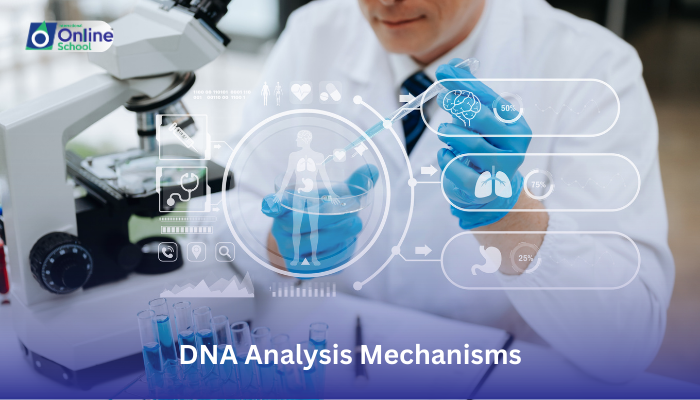
Learning Outcomes:
i. Explain the purpose and importance of DNA analysis in various fields.
ii. Describe the key mechanisms used for analyzing DNA, including hybridization, amplification, and sequencing.
iii. Appreciate the applications of DNA analysis in forensic science, medical diagnostics, and other areas.
Introduction:
Imagine DNA as a detailed map, holding the instructions for life encoded within its twisted strands. DNA analysis is like scrutinizing this map, revealing its secrets and unlocking the mysteries it holds. Today, we delve into the fascinating world of DNA analysis, exploring its mechanisms and appreciating its profound impact on various fields.
i. Why Analyze the Blueprint? The Purposes of DNA Analysis:
Identity confirmation: In forensic science, DNA analysis helps identify individuals from crime scene evidence like blood, hair, or saliva, aiding in investigations and legal proceedings.
Disease diagnosis and prediction: Analyzing DNA mutations associated with specific diseases allows for accurate diagnosis, personalized treatment options, and early detection of potential health risks.
Understanding genetic diversity: Studying the variations in DNA sequences across individuals and populations helps scientists understand evolution, adaptation, and the genetic basis of traits.
Gene mapping and functional analysis: Identifying the location and function of specific genes within the genome fuels advancements in gene therapy, drug development, and understanding complex biological processes.
ii. The Tools of the Trade: Key Mechanisms of DNA Analysis:
Hybridization: This technique relies on the complementary nature of DNA sequences. Two single strands with matching sequences bind together, allowing for the detection of specific DNA targets within a sample. Imagine two puzzle pieces clicking into place, revealing a specific region of the map.
Amplification: Techniques like PCR (polymerase chain reaction) make millions of copies of specific DNA segments, allowing analysis even from small or degraded samples. Imagine using a magnifying glass to zoom in on a specific section of the map, making its details clearer.
Sequencing: This process determines the exact order of the four chemical bases (adenine, guanine, cytosine, and thymine) within a DNA fragment, revealing the complete genetic code of the targeted region. Imagine deciphering the language written on the map, understanding its instructions.
iii. From the Lab to the World: Applications of DNA Analysis:
Forensic science: DNA fingerprinting is used to identify criminals, exonerate the wrongly accused, and establish family relationships.
Medical diagnostics: Genetic testing helps diagnose genetic disorders, predict disease risks, and personalize treatment plans for patients.
Agriculture: DNA analysis assists in breeding crops with improved yields, disease resistance, and nutritional value.
Conservation biology: Studying the genetic diversity of endangered species aids in conservation efforts and population management.
DNA analysis, with its diverse mechanisms and applications, has become a cornerstone of modern biology and its related fields. By understanding the principles behind this powerful tool and appreciating its impact on various aspects of society, we gain a deeper appreciation for the power of the genetic code and its potential to shape a future where personalized medicine, forensic accuracy, and advancements in various fields become a reality.